Healthy eating
introduction
Diet has a major impact on health and wellbeing. But what exactly is healthy eating?
Basically, a balanced diet that gives the body exactly what it needs is recommended. Valuable foods such as fruit and vegetables are in the foreground. Sugary sweets, chips and alcohol should only be consumed rarely and in small quantities, but you don't have to completely refrain from small moments of pleasure.

How do you eat healthily?
In Germany, nutritional recommendations are made by the German Nutrition Society (DGE). Fruit and vegetables should be consumed in large quantities. They contain valuable ingredients such as vitamins and trace elements and have few calories. They also provide the body with fiber. Dietary fiber consists of indigestible plant fibers, it swells up in the intestine and stimulates digestion. They keep us full longer because they stabilize the blood sugar level and prevent dreaded food cravings.
Carbohydrates are considered to be the main sources of energy. Complex carbohydrates such as whole grain products (whole wheat pasta etc.) are healthier than simple carbohydrates, i.e. white flour products. White flour products contain simple carbohydrates that are quickly broken down into sugar in the body and go into the blood. The blood sugar level rises rapidly, but also falls again very rapidly. This can show up as cravings. White flour products are considered fattening foods and should therefore only be consumed rarely.
Proteins provide our body with important building materials, the amino acids. You should therefore consume 1 gram of protein per day with food for every kilogram of body weight.
Fat should also not be missing on a healthy menu. Fats provide essential fatty acids and enable the fat-soluble vitamins to be absorbed in the intestine. Vegetable fats are significantly healthier than animal fats. Vegetable fats contain large amounts of unsaturated fatty acids. They include, for example
- avocado
- Vegetable oils
- Seeds, nuts
- fish
- Grain
Unhealthy animal fats mainly contain saturated fatty acids. Here fat serves as a flavor carrier. Examples are meat, butter, cream, and cheese.
It is also important to drink enough fluids. The best is water. Coffee, alcohol and drinks containing sugar should only be consumed occasionally as luxury foods.
A healthy diet consists of a lot of fruit and vegetables, complex carbohydrates, mainly vegetable fats and good proteins.
It is also important to roughly cover your individual calorie requirements. One can calculate the ideal amount of calories. There are computers on the Internet that provide approximate values for this. With exercise you break down calories and increase your need. If you reduce your calorie intake, you lose weight. If you increase your calorie intake well above your needs, you gain weight.
In order to live healthily, you should aim for a balanced diet with high-quality foods, plenty of fluids and exercise. Alcohol, sweets, chips and other sweets should not be consumed daily in moderation.
In order to know exactly what you are consuming, it is advisable to cook yourself. Ready-made products often contain a lot of hidden fats and sugars and additives. If you cook yourself, you can consume fresh food and always try something new.
You might also be interested in:
- Whole food - what is it?
- Healthy oils
- vegetarianism
The food pyramid
The food pyramid of the German Nutrition Society (DGE) aims to make it easier to integrate a healthy, wholesome diet into everyday life.
The basis of the pyramid are the drinks, at least 1.5 liters a day are recommended, most of which consist of mineral water. Food groups are divided into 6 segments, which should be included in the daily diet with different percentages.
30% of grain, grain products and potatoes flow into the pyramid. This means that around a third of all food should consist of these products.
Vegetables make up about a quarter of the daily food with 26%.
17% fruit should be included in the menu.
Milk and dairy products such as cheese and yogurt should make up 18% of food, while meat products, sausage, fish and eggs should not account for more than 7% in total. Good oils and fats should make up 2% of the daily diet, while sweets should only be consumed sparingly.
More about this under: Food pyramid
Typical healthy foods
A healthy diet consists of a varied menu with various, balanced foods. Living healthy means a daily intake of fruits, vegetables, complex carbohydrates, vegetable fats, good proteins and plenty of water. Individual foods have an impact on fat burning, the cardiovascular system, immune system, our skin, etc.
For the cardiovascular system are for example
- orange
- garlic
- oatmeal
- Linseed,
- tuna
- herring
- Olive and rapeseed oil
- red grape juice
ideal food. They provide valuable fatty acids, trace elements and antioxidants.
The following foods are beneficial for supporting the immune system:
- kiwi
- broccoli
- spinach
- probiotic yogurt
- Tofu, beef fillet
- Horseradish
- Green tea
- Cranberry juice
- dark chocolate in small quantities
We recommend an intake of fruit and vegetables 5 times a day, 2 to 3 liters of water a day, complex carbohydrates such as whole grain products or potatoes. In addition, low-fat dairy products, high-quality vegetable oils and fish and meat 1 to 2 times a week can be on the menu.
Omega-3 fatty acids fulfill a wide variety of functions in the body and are indispensable for humans. Among other things, they are an important part of the cell membrane, which gives all body cells their shape and has an important function in signal transmission. They are in many foods. More about this at: Omega 3 fatty acids
Lose weight with a healthy diet
Diet can help you lose weight in the long term and maintain your desired weight by mainly including healthy foods such as vegetables and fruits on the menu. Complex carbohydrates such as whole wheat pasta or whole wheat bread and healthy proteins such as fish can also help you lose weight in a healthy way. You should drink a lot, preferably water.
Sweets, chips, alcohol, sweetened drinks and ready-made products should disappear from the menu.
In order to lose weight healthily, you should consume fewer calories than are consumed. You can calculate your personal basic need for calories and consider activities such as sport or physical work. The recommended calorie requirement is reduced by 500 calories per day over a longer period of time. This way you can lose weight in a healthy way and reduce the risk of food cravings and the yo-yo effect.
Also read: Calorie-conscious diet
Healthy diet and exercise
A healthy diet and regular exercise are the pillars of a healthy lifestyle.These are the most important factors influencing fitness, well-being and health. In order to be able to perform in sport, a wholesome, balanced diet is very important. You should encourage a balanced supply of vitamins and minerals, fiber and an optimal ratio of carbohydrates to fats.
At the same time, you shouldn't eat more than you actually need. Healthy eating and exercise improve fat burning and the figure. In addition, you strengthen your personal immune system and reduce the infection rate. If you eat healthily and are fit, you get sick less often.
On the other hand, you shouldn't live permanently in a calorie deficit because people need a certain amount of energy for mental and physical performance. In order to maintain or build muscle mass, it is important to ensure that there is enough protein in food.
Find out more at: Sport and Diet
Building muscle through a healthy diet
There are healthy foods that promote muscle building as part of muscle building training. The basis is a daily intake of at least 1 to 2 liters of water. Eggs contain a high concentration of essential amino acids. They are an ideal source of protein when exercising. Eggs can be consumed raw in a shake, for example with bananas, organ juice and coconut butter.
Fish is also a well-known high-quality source of protein. One to two fish meals a week are ideal for muscle building training. Nuts, beans and oats are foods that, in addition to amino acids, bring diversity to the menu. Oats are easy to swell with water and fruit, and nuts provide protein, healthy fatty acids, calcium, magnesium and iron.
Protein powder made from whey, hemp, rice or lupine protein in the form of protein shakes can have a positive effect on muscle building before or after training. The foods mentioned are examples of a diet combined with exercise. Protein-rich food promotes muscle building and promotes fat burning.
Read more about this under: Building muscle through diet
Nutritional advice for existing diseases
Healthy diet for high blood pressure
A change in diet is of great importance for high blood pressure. A targeted diet can often prevent or at least delay the use of medication.
Basically, if you have known hypertension, you should not consume more than four to six grams of salt a day. Salty food can increase blood pressure very quickly and this can be avoided in a targeted manner. Potassium is an antagonist of sodium, which controls the water balance. If the body has enough potassium, this means that more sodium is excreted and the blood pressure does not rise for no reason. Potassium is found in spinach, potatoes, kale, avocados, nuts, and bananas.
In the case of high blood pressure, an intake of sufficient unsaturated fatty acids is recommended. Fish and olive oil are sources of high quality omega-3 fatty acids. These have a positive effect on blood pressure and blood vessels. Tuna, herring, salmon, mackerel and sardines contain large amounts of unsaturated fatty acids.
In addition, fruits and vegetables are healthy and, due to their valuable minerals, are recommended for high blood pressure patients. In addition, it is helpful to lose excess weight and largely avoid alcohol.
Learn more at. Diet for hypertension
Healthy diet for acne
Certain foods are linked to blemishes and acne. A healthy, balanced diet and avoiding certain foods can have a positive effect on the complexion of the skin.
Particularly bad foods for people with acne are red meat, dairy products, sugar, white flour, convenience foods, fast foods, soft drinks, salted nuts, and chocolate.
On the other hand, raw vegetables, fish and juices such as carrot juice are positive for the complexion. In addition, you should drink at least 2 liters of fluid a day to flush toxins out of the body. Mineral water and unsweetened teas are best.
Healthy diet for irritable bowel syndrome
The term irritable bowel syndrome describes a dysfunction of the digestive tract. The consumption of certain foods often causes pain and digestive problems. People with irritable bowel syndrome often notice very well which foods they can tolerate and which they cannot. A food diary / symptom diary can help to find out which foods are causing symptoms.
Eating small meals is generally helpful. One should eat slowly and chew consciously. It is important that those affected drink enough fluids and reduce alcohol, coffee and black tea as much as possible. Mild food is better for those with irritable bowel syndrome than particularly spicy, salty, spicy, sweet or fatty foods. Basically, foods rich in fiber are recommended, which promote digestion and accelerate intestinal transit. These include potatoes, carrots, spinach, strawberries, bananas and sour milk products such as kefir, natural yogurt and buttermilk.
You might also be interested in: Diet for digestive disorders
Healthy diet for gout
The common disease gout is closely related to an unbalanced, meat-based diet and alcohol consumption. A healthy diet can alleviate the symptoms and positively influence the course of the disease.
Uric acid is a metabolic product that is in the foreground in gout. People with gout have high levels of uric acid in their blood. Animal foods lead to an increased production of uric acid in the body. Alcohol, in turn, inhibits the excretion of uric acid through the kidneys. Accordingly, excessive alcohol consumption should be avoided in gout. Beer in particular has a negative effect on the disease.
In the case of gout, foods containing purines should be avoided. Purines are broken down into uric acid during digestion in the body. If you ingest large amounts of purines, uric acid levels rise and crystals build up in joints, where they cause pain. Foods containing purine are primarily animal products such as poultry, pork and goose meat and milk, butter, cheese, yogurt and eggs. It is advisable to eat animal products in smaller quantities and to consume larger quantities of foods that are effective against gout.
Carrots, tomatoes, celery, onions, strawberries, plums and caranberries are effective against gout. A healthy diet for gout includes plenty of drinking, preferably two to three liters of water and herbal teas a day.
You can also find out more at: Diet for gout- what should you consider?
Healthy diet for diabetes melitus
A high proportion of fat in the food delays the absorption of carbohydrates and makes you fat in the long term. If you lose weight, the blood sugar control in the body often improves. In principle, vegetable fats with unsaturated fatty acids are healthier and protect the blood vessels from calcification (arteriosclerosis). Diabetics should use polyunsaturated fatty acids as in fish, avocados, sunflower, soy or safflower oil and monounsaturated fatty acids e.g. from olive or rapeseed oil.
Fats of animal origin such as bacon, milk fat, butter and pork fat should be significantly reduced. In addition, diabetics should not consume too much protein. In Central European countries we consume far too much fat and protein. A high protein intake puts stress on the kidneys and is therefore harmful for diabetics. The daily protein intake should therefore be in the lower range of the recommended values.
Carbohydrates directly affect blood sugar levels. In diabetics, carbohydrates should make up more than half of the diet. Vegetables, legumes, fruit and grain products are good for this. Diabetics who are already injecting insulin have to calculate their carbohydrates. There is the auxiliary quantity bread unit (BE) for this purpose. 1 BE means 10-12 grams of carbohydrates. There are corresponding tables that make calculations easier.
Dietary fiber is ideal for diabetics, as it saturates for a long time and only floats slowly in the blood. Basically, foods with a low glycemic index such as legumes, oats, and pasta are recommended. The glycemic index relates to the effect food has on blood sugar levels.
In addition, people with diabetes should be careful when consuming alcohol. An occasional glass of wine or beer seems to be harmless. However, if you are taking insulin or other medications, it is best to have alcohol with a snack containing carbohydrates. The reason is that alcohol can cause hypoglycaemia due to its metabolic effects.
In summary, a varied whole food diet is very suitable for people with diabetes. Alcohol should be consumed consciously and in moderation, while at least 2 liters of water should be consumed daily. Diabetics should lose excess weight and not eat too much fat.
Physical activity also has positive effects on the course of the disease in diabetes. It is best to exercise at least half an hour every day.
More information on this at: Dietary recommendations for diabetes mellitus
What are the long-term consequences of unhealthy eating?
There are numerous diseases and ailments that are associated with unhealthy diet. Unhealthy eating makes you obese, sick, depressed and the main risk factor for diseases that are preventable.
- American studies have shown that people who eat fast food frequently over a long period of time become significantly more depressed.
- The development of high blood pressure is favored by an unhealthy diet. High blood pressure is very harmful in the long term and can cause serious cardiovascular diseases.
- In addition, an unhealthy lifestyle promotes the development of type 2 diabetes mellitus. Excessive sugar intake makes the body resistant to the hormone insulin.
- If you eat very unhealthily for a long time, disorders of the fat metabolism can occur. Increased blood cholesterol levels are becoming more common. These lipid metabolism disorders promote changes in the blood vessels, such as atherosclerosis and calcification, which in the long term significantly increases the risk of a heart attack or stroke.
- Heart attacks and strokes are the most dangerous consequences of years of unhealthy diet. Elevated blood lipids, obesity, diabetes and smoking are major risk factors like these diseases. Strokes and heart attacks are dangerous as they can make you seriously ill and even be fatal.
An unhealthy diet can be changed in a targeted manner. With a healthy lifestyle one can effectively lower the risk of the diseases mentioned.
Is a healthy diet always sugar-free?
A healthy diet does not necessarily have to be sugar free. With a healthy diet, you pay attention to the different sugar suppliers. In addition to simple table sugar, there are z. B. still the fruit sugar. Any food containing carbohydrates is converted into sugar by the body. In the narrower sense, a sugar-free diet would also be a carbohydrate-free diet.
Whole grains are complex carbohydrates made from whole grains. The germ, shell and endosperm are still present in whole grain products. White flour products are created when the germ and shell are removed from the grain. This means that white flour loses 30% protein, 20% fiber, almost 80% iron, 80% magnesium and 99% chromium compared to whole grain.
White flour products only contain simple carbohydrates, which are very quickly digested into sugar in the body. The sugar goes into the blood quickly and does not last long. Whole grain products are broken down less quickly and contain valuable ingredients. That is why whole grain products are significantly healthier than white flour products.
A healthy diet does not forego sugar. The point is that in a healthy diet, healthy sugar suppliers are paramount.
Recommendations from the editorial team
You might also be interested in:
- Calorie-conscious diet
- Diet for digestive disorders
- Lose weight by changing your diet
- Sport and Diet
- Building muscle through diet


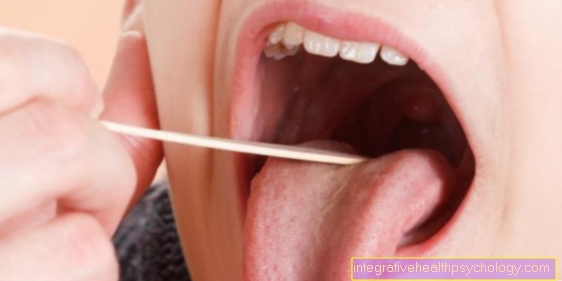



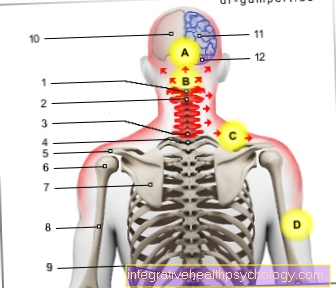



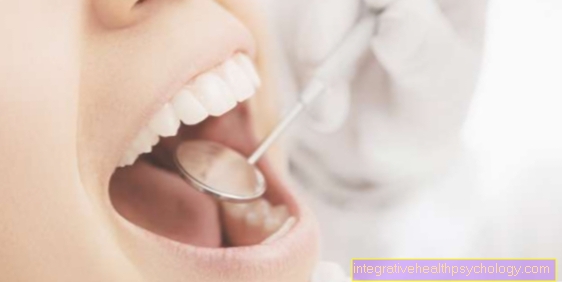
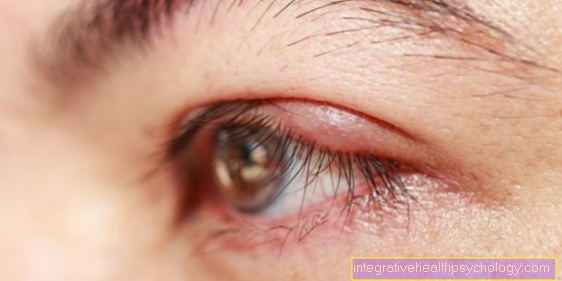












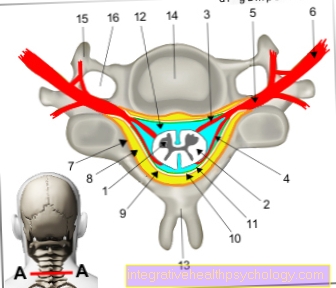
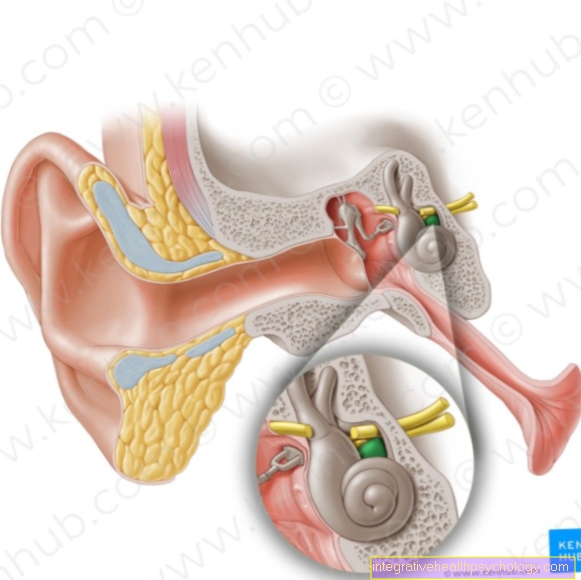

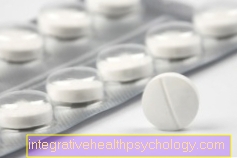

.jpg)